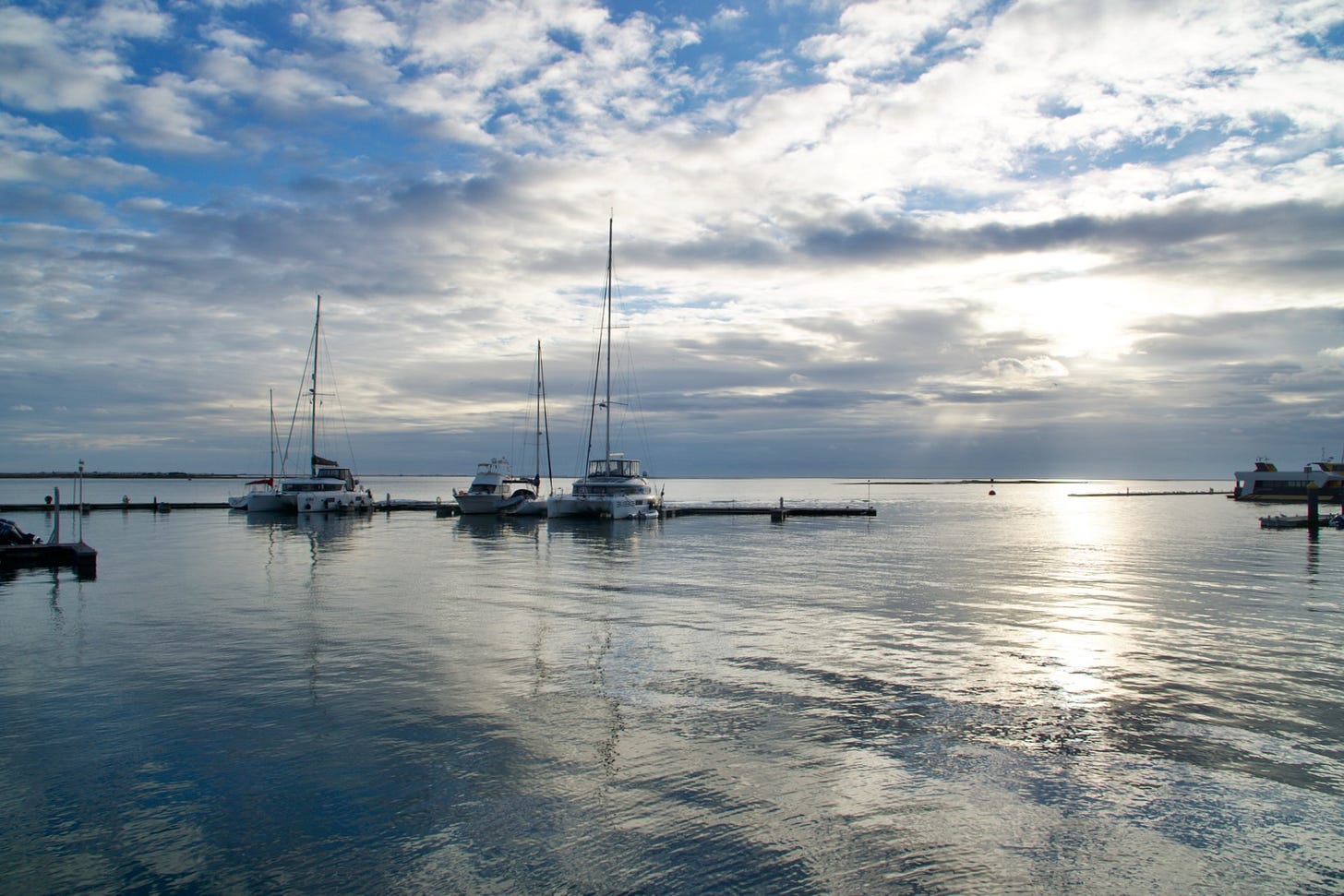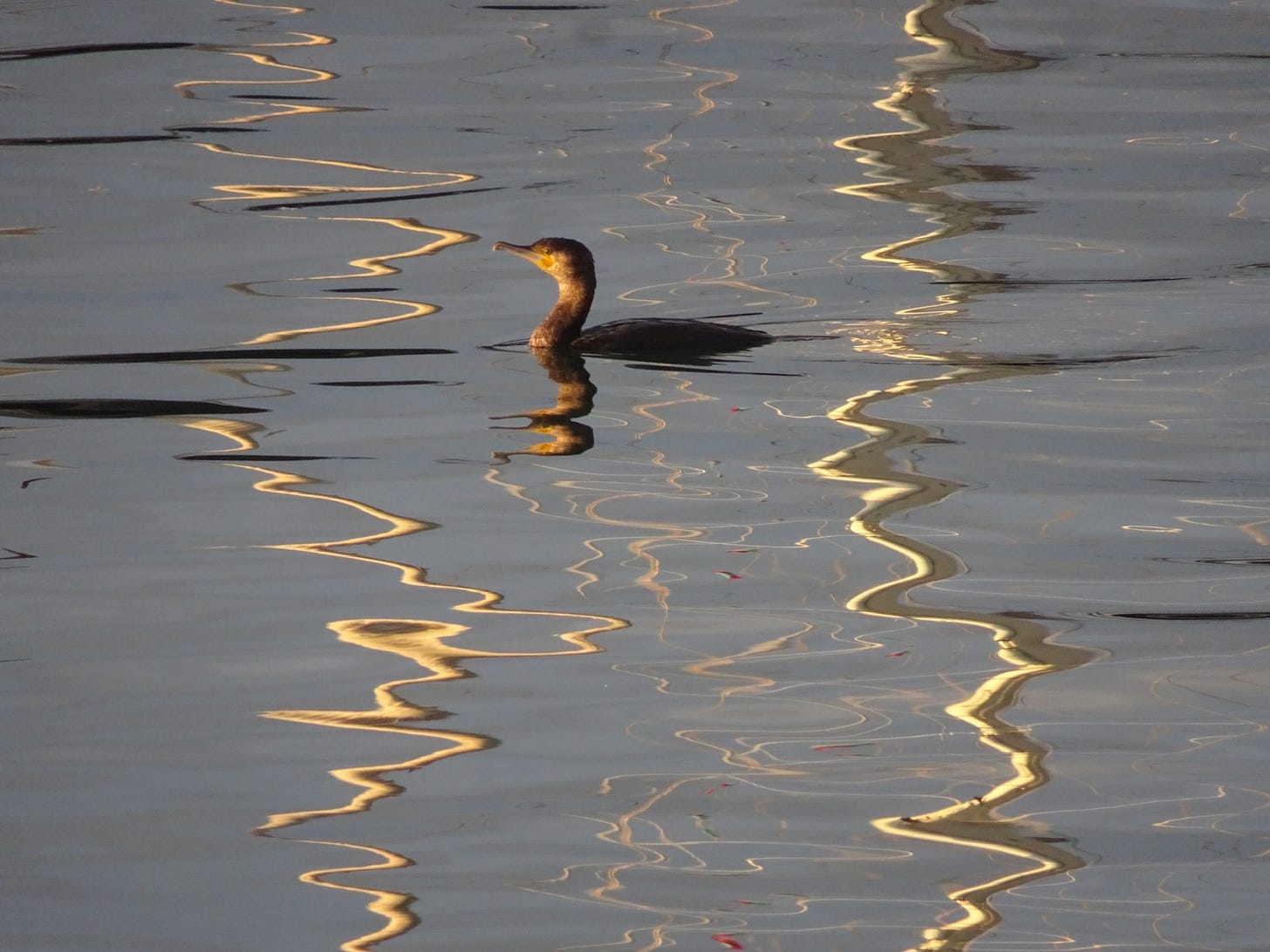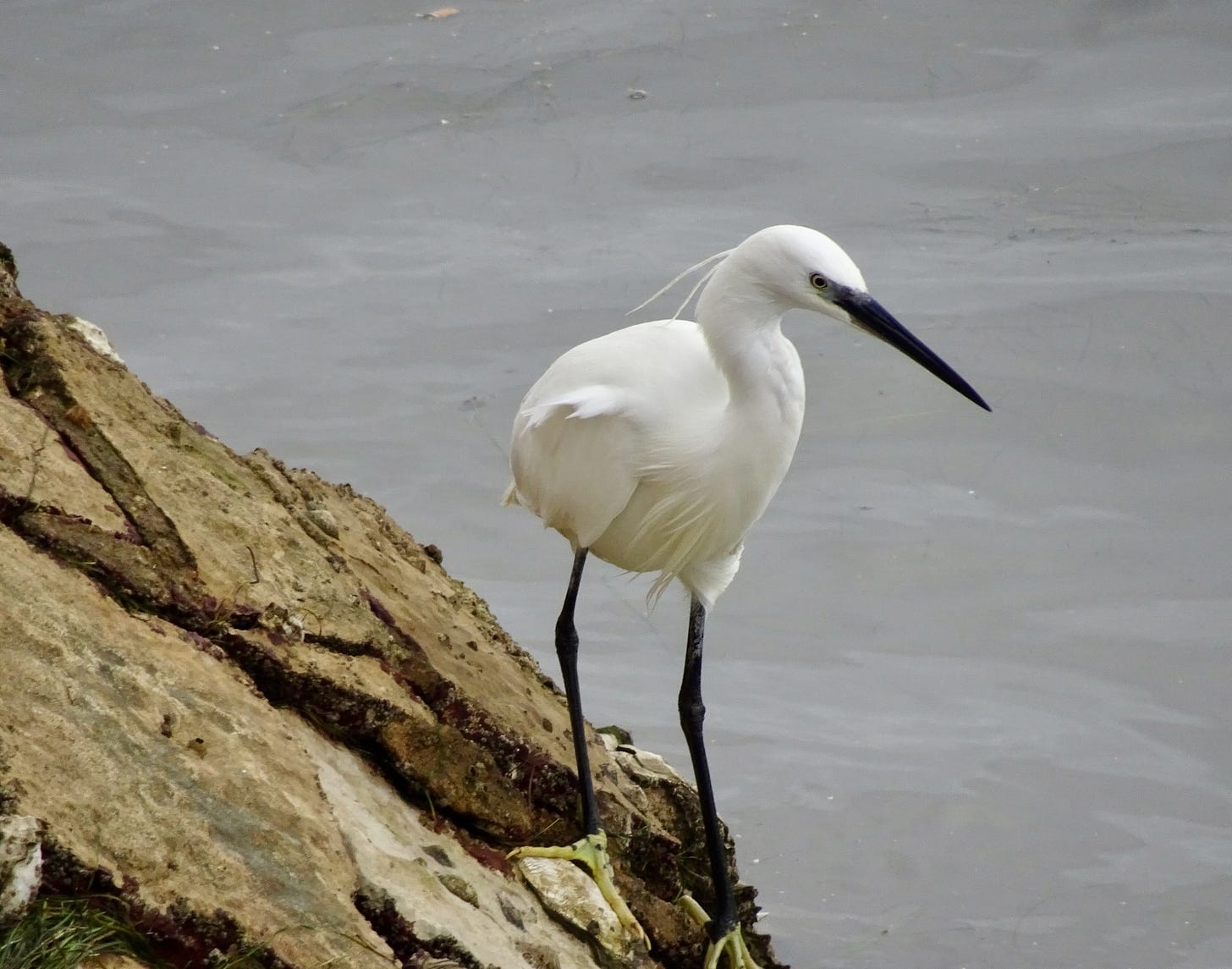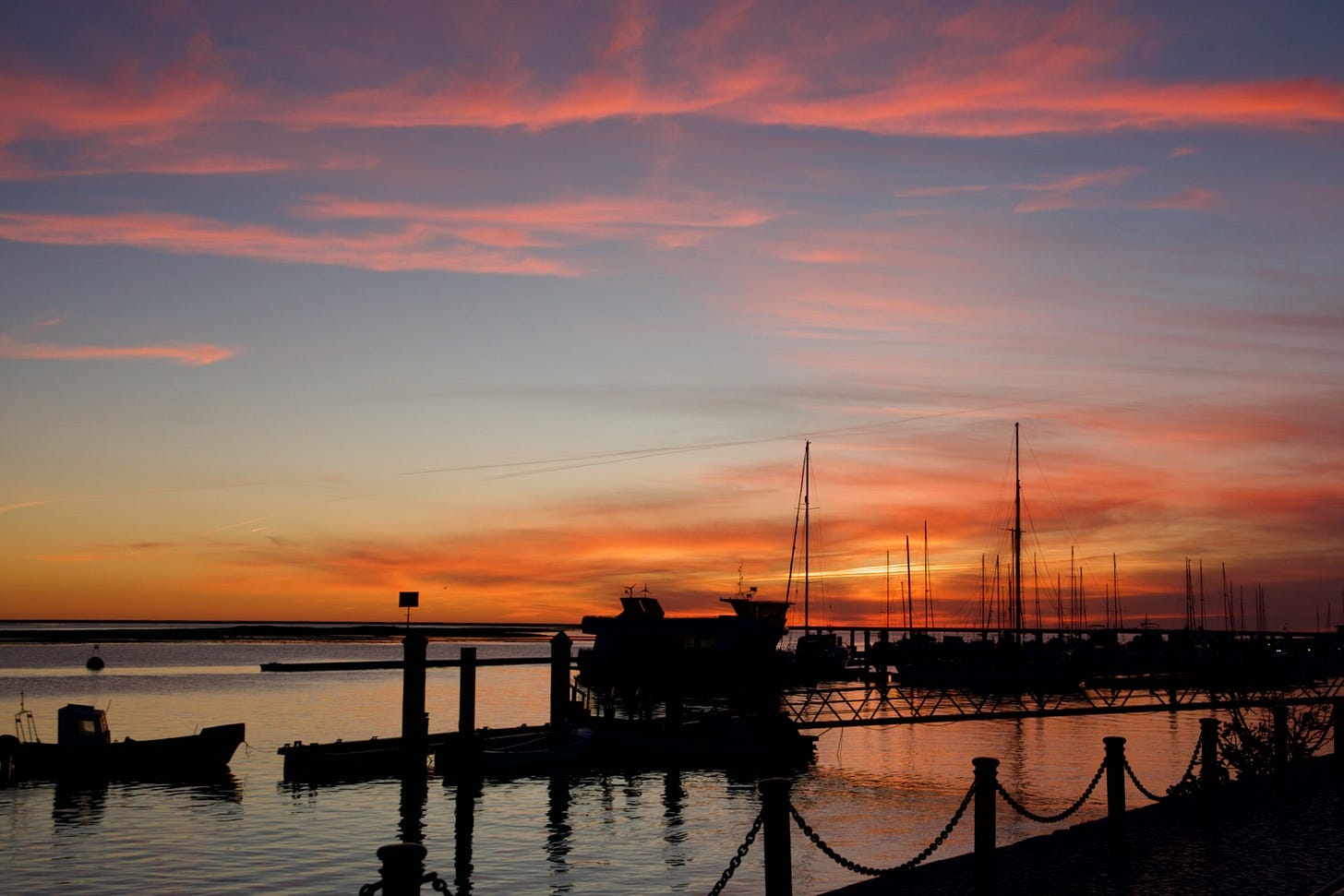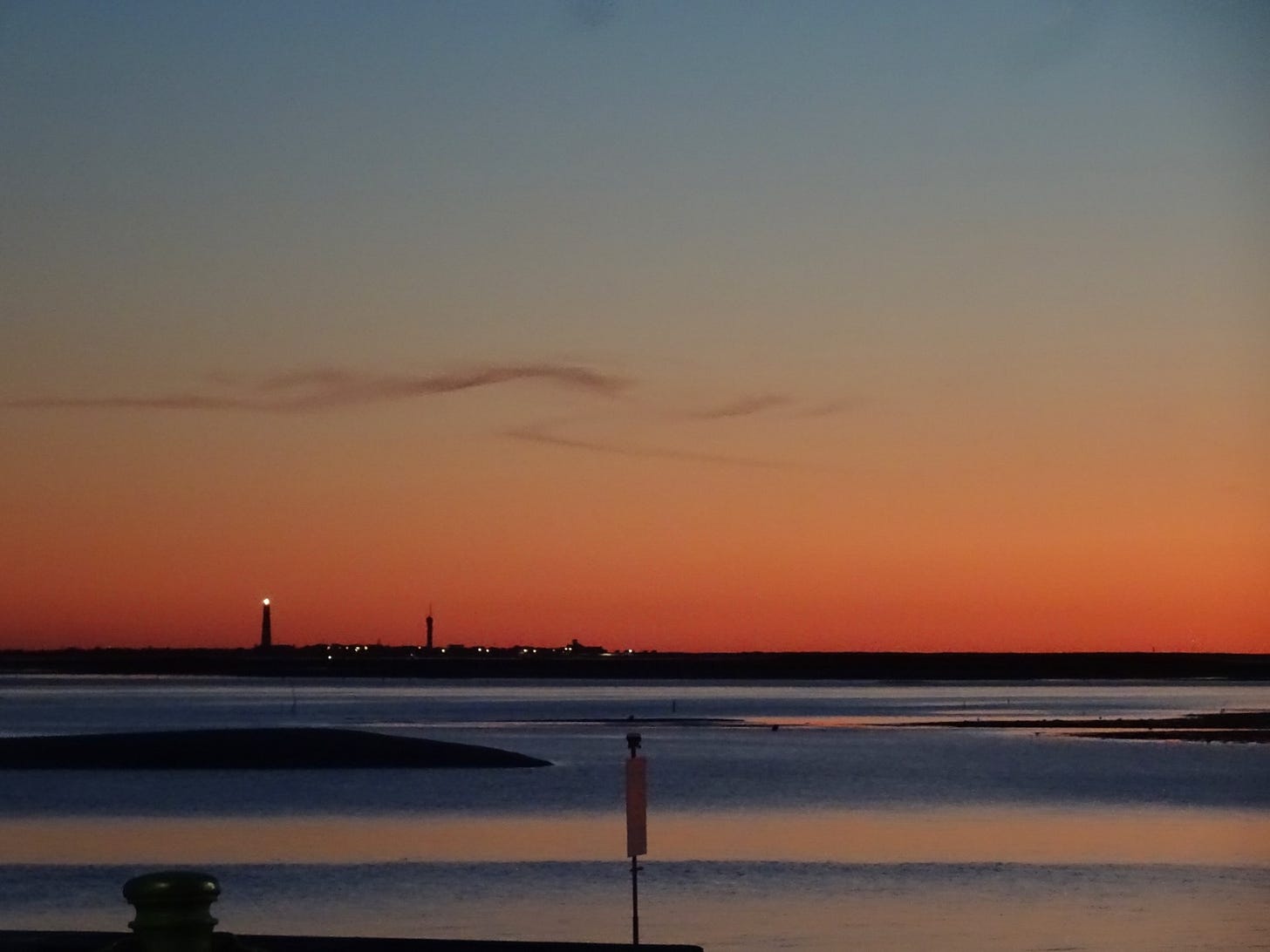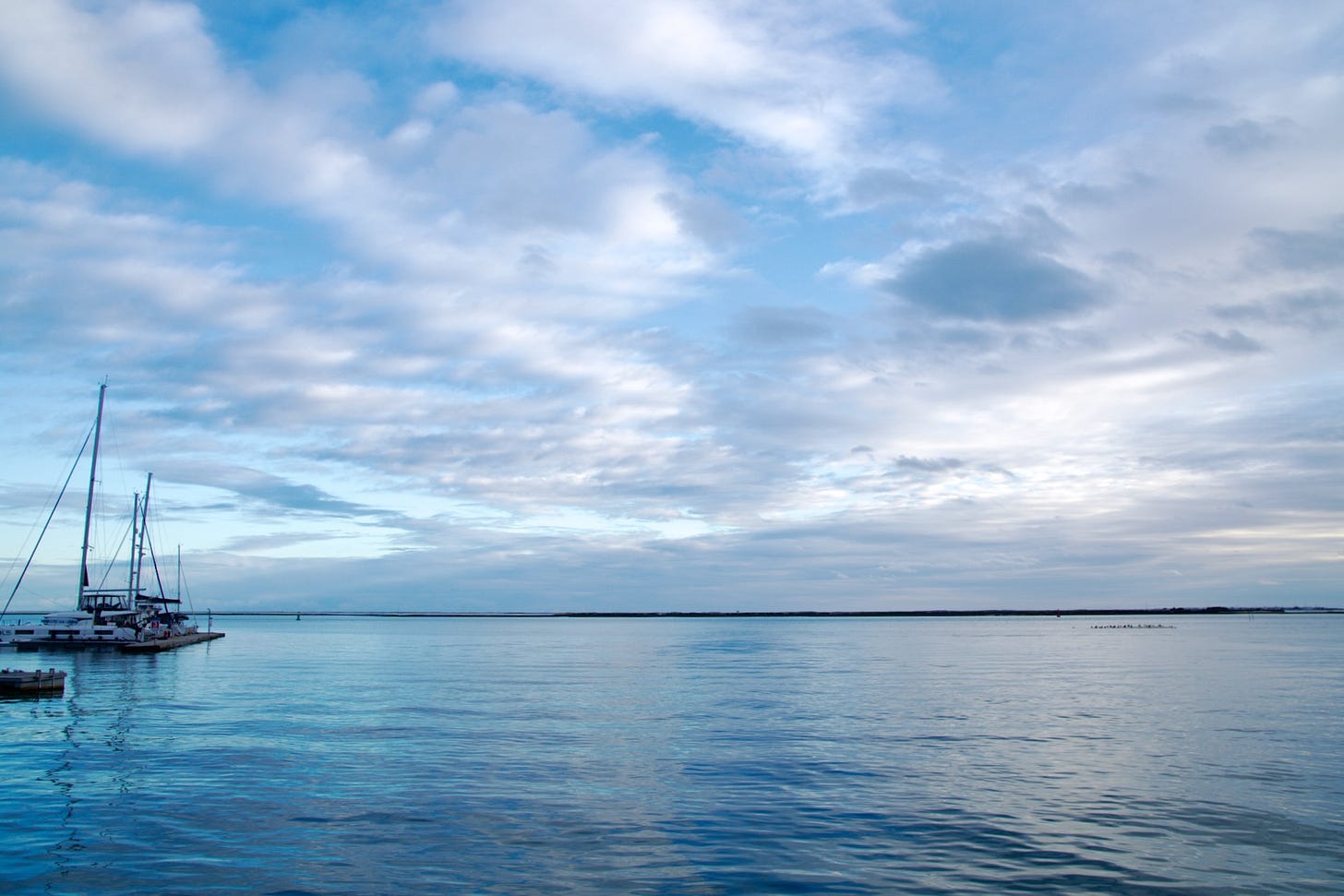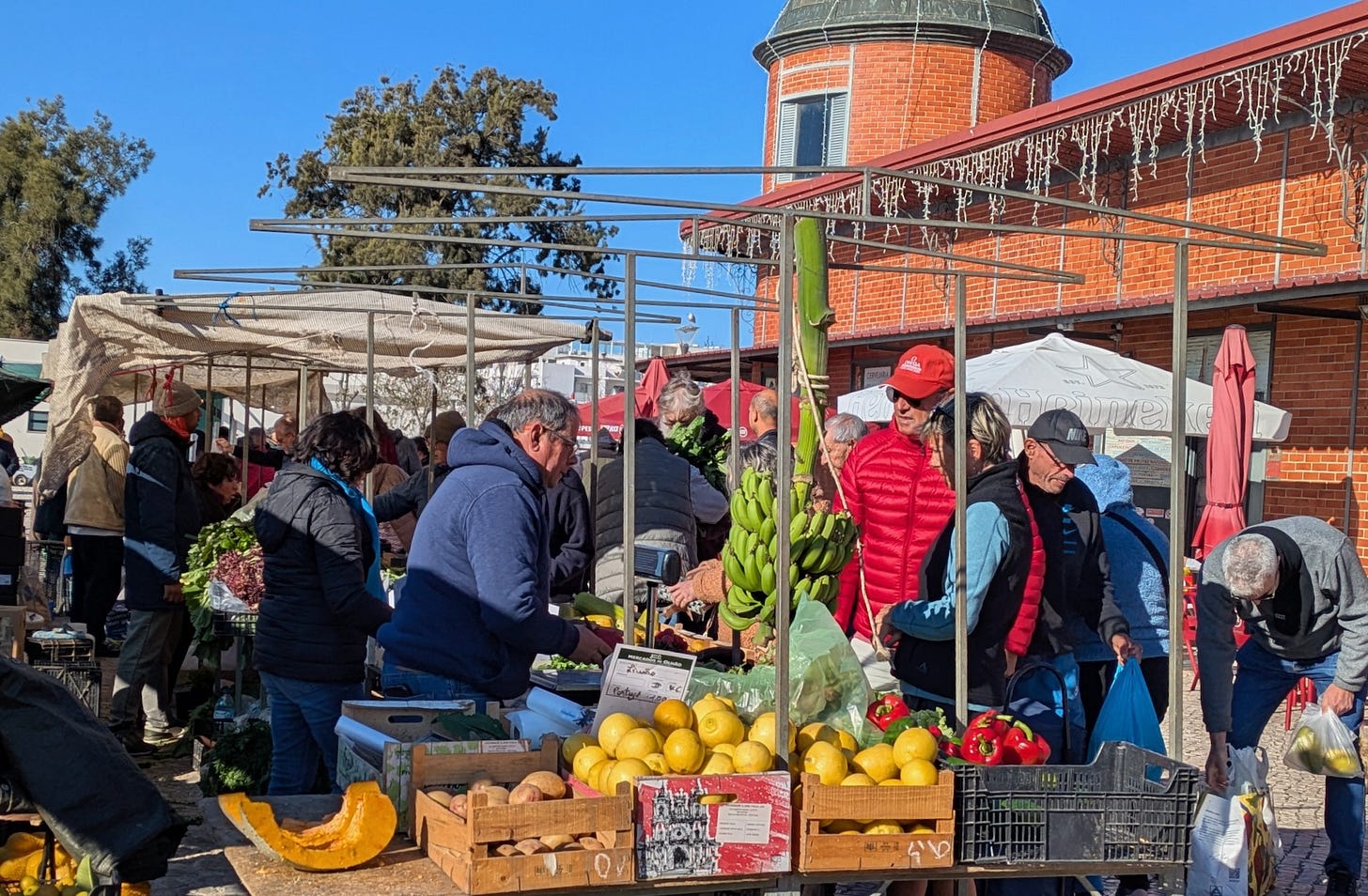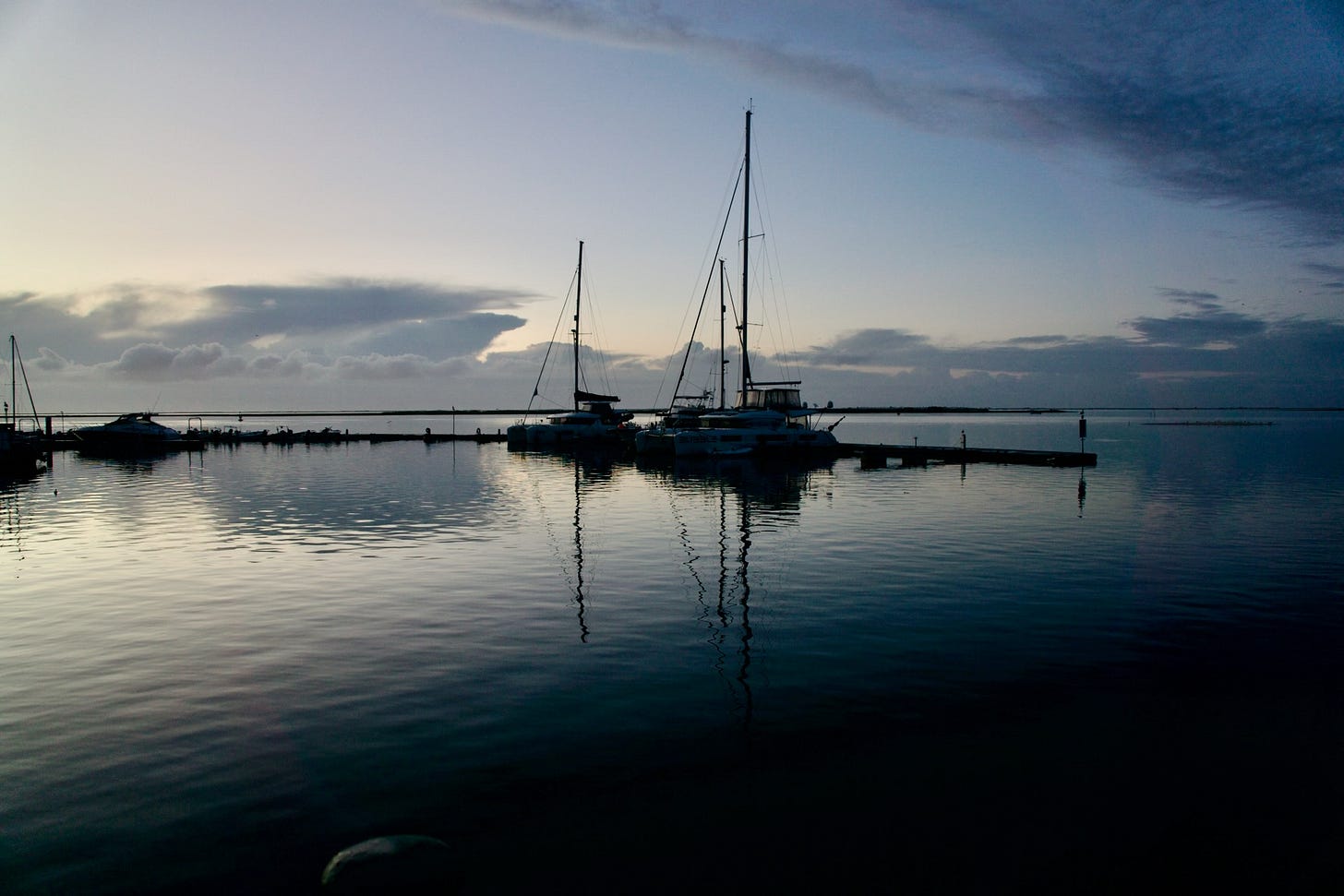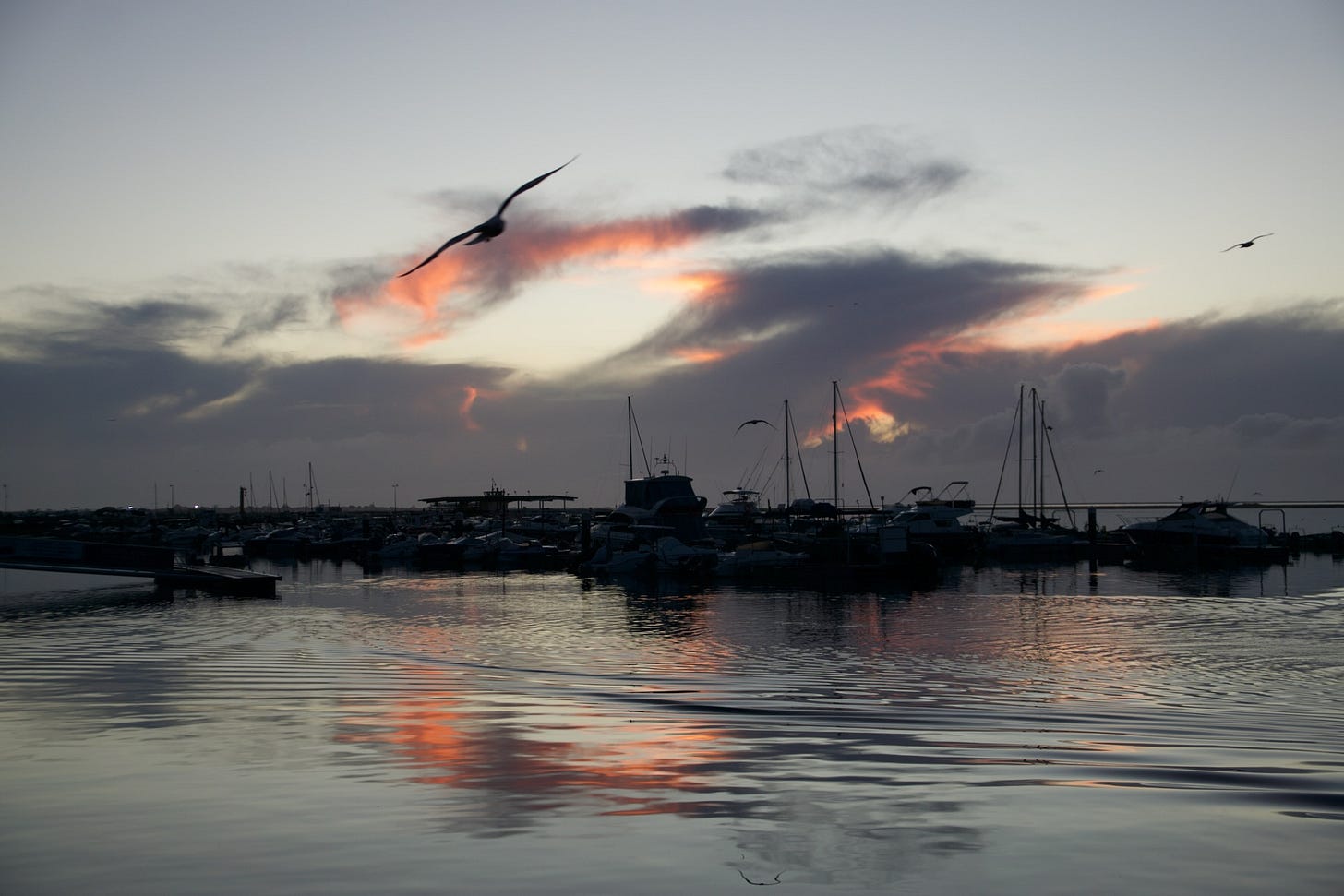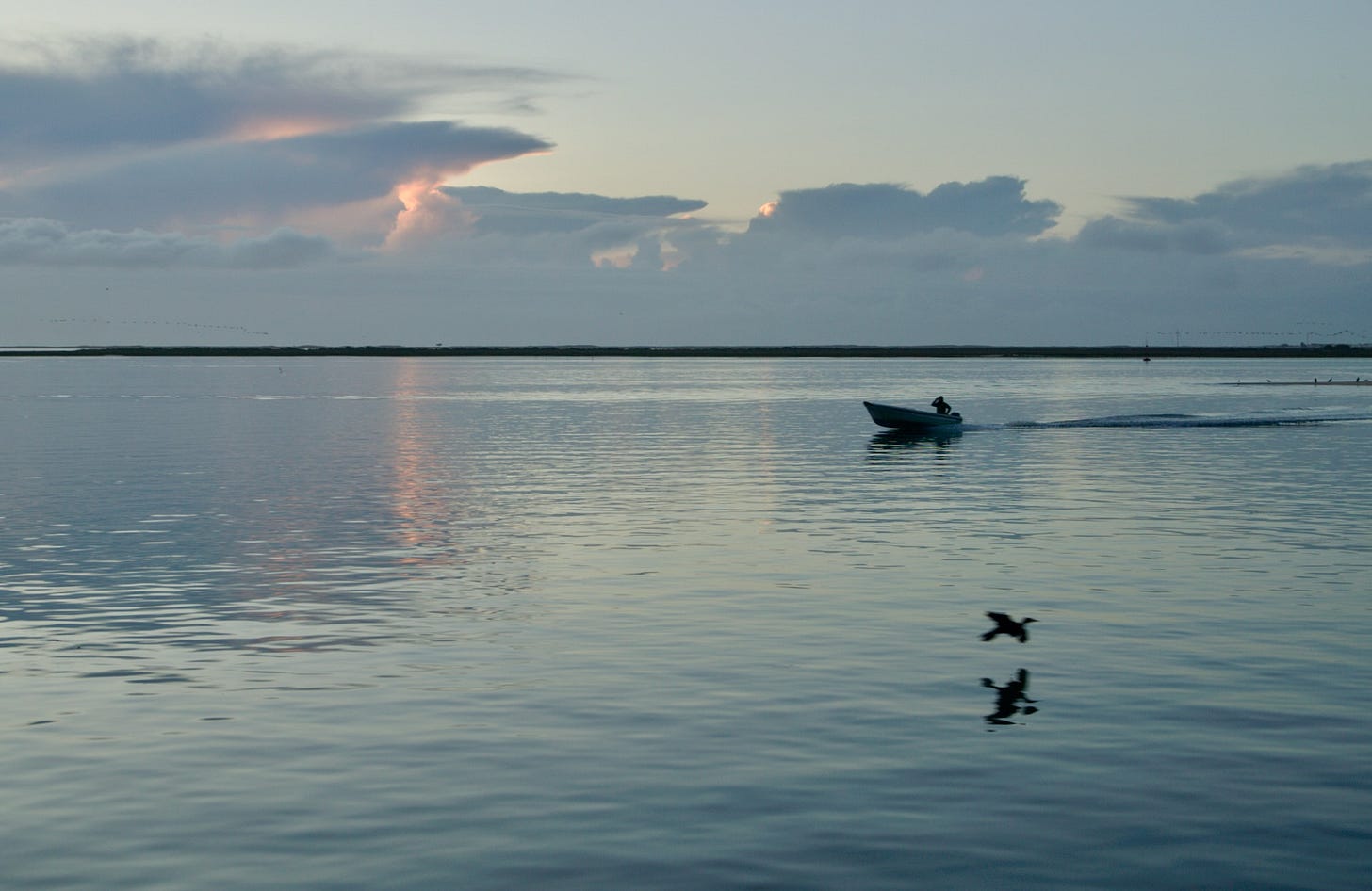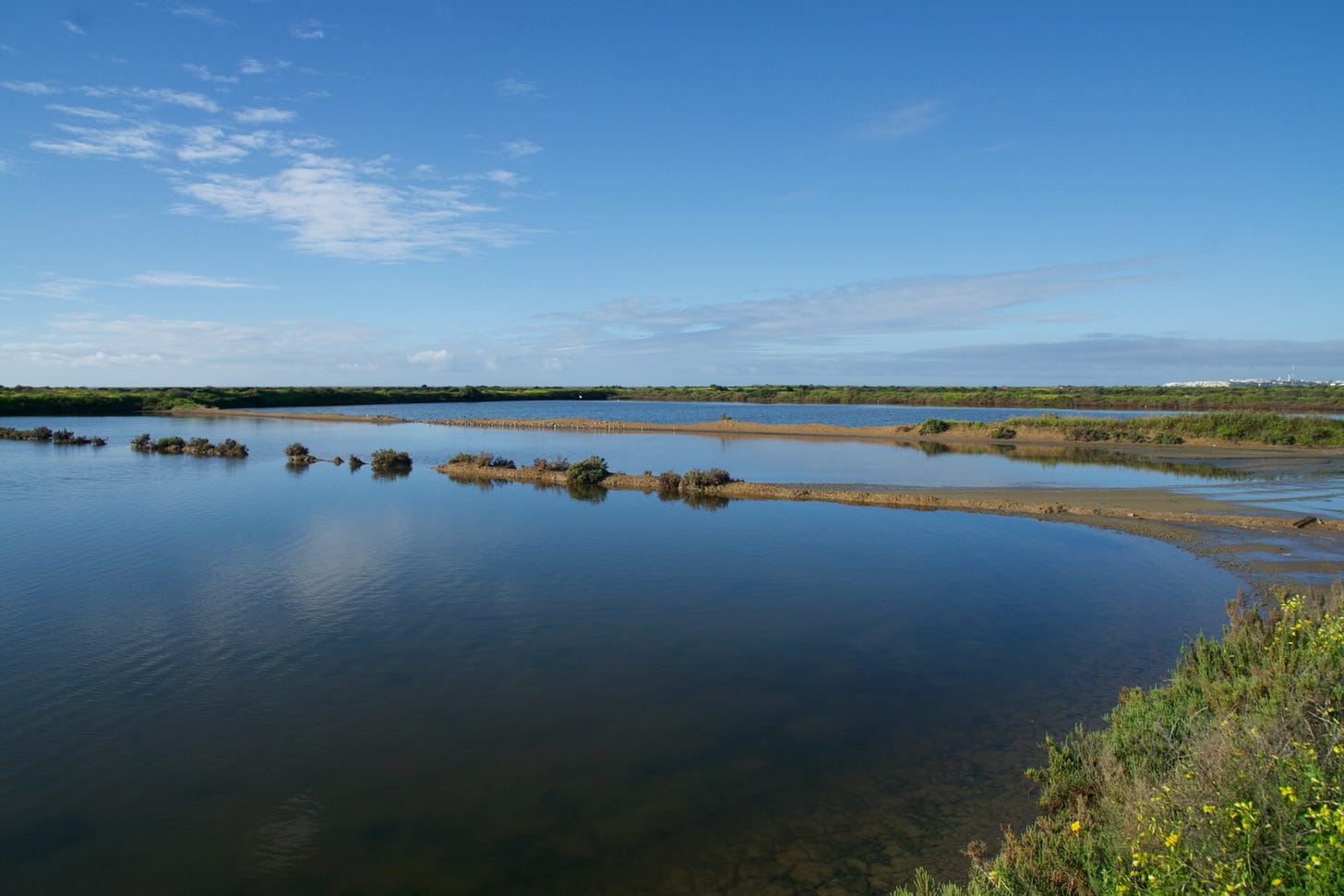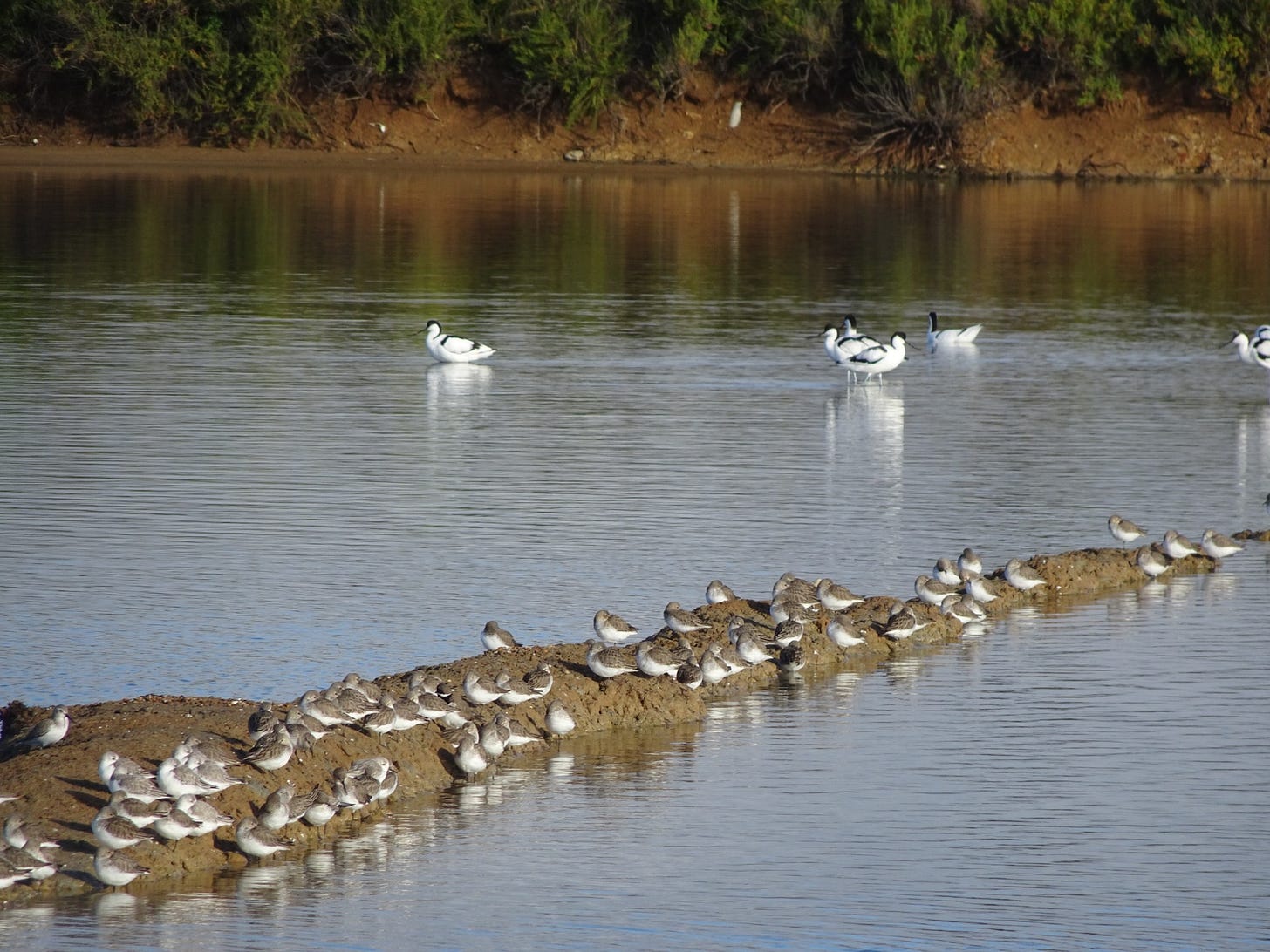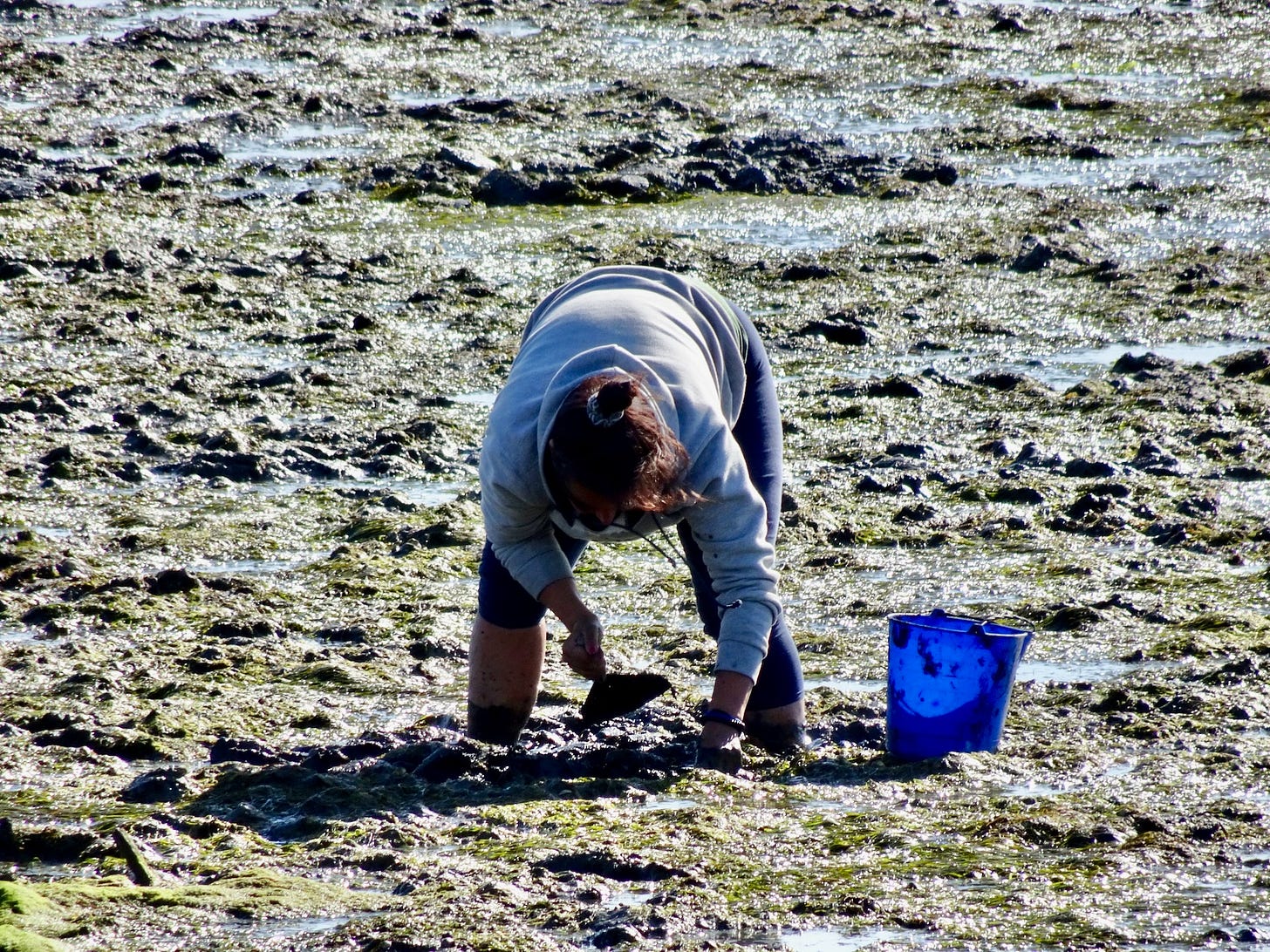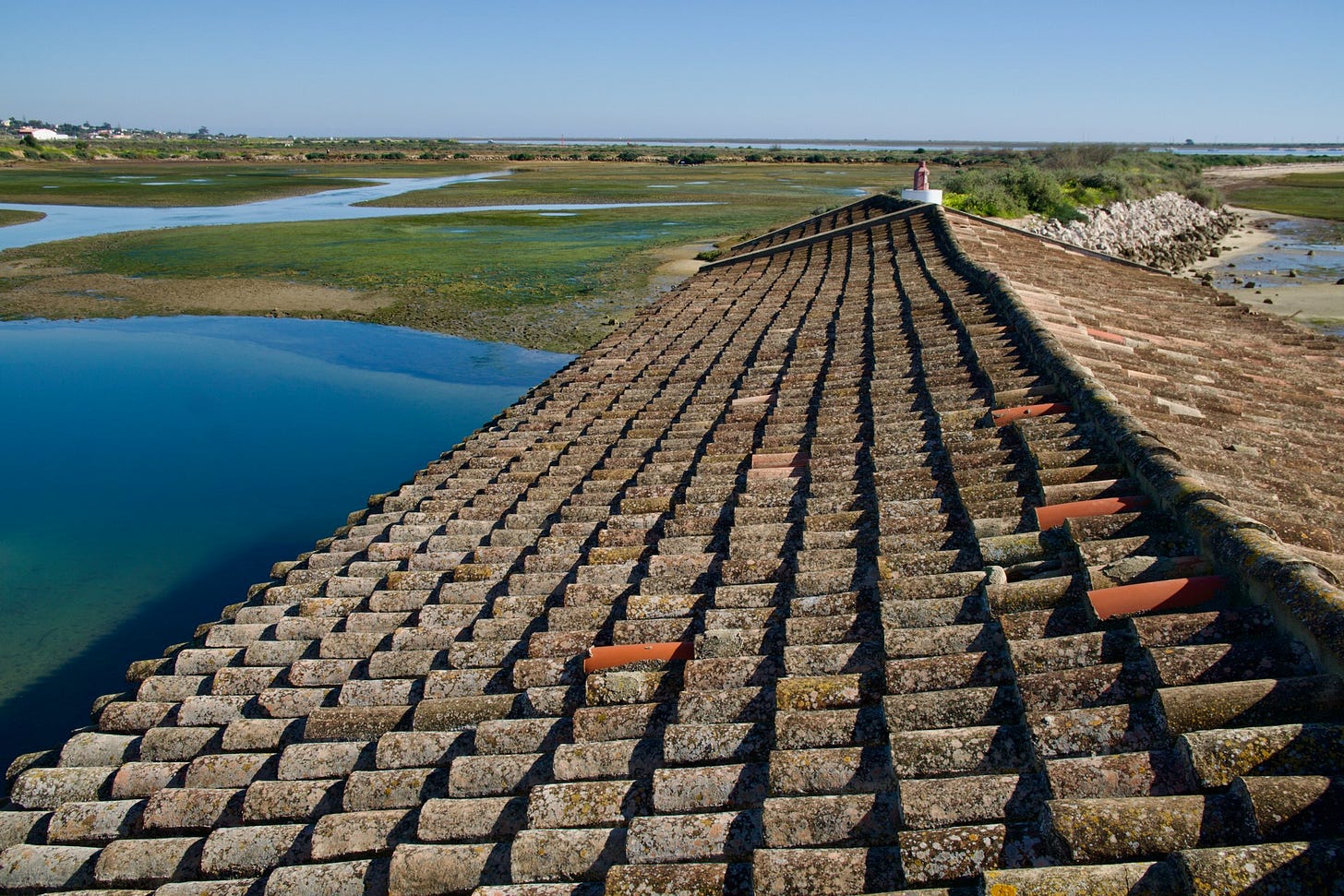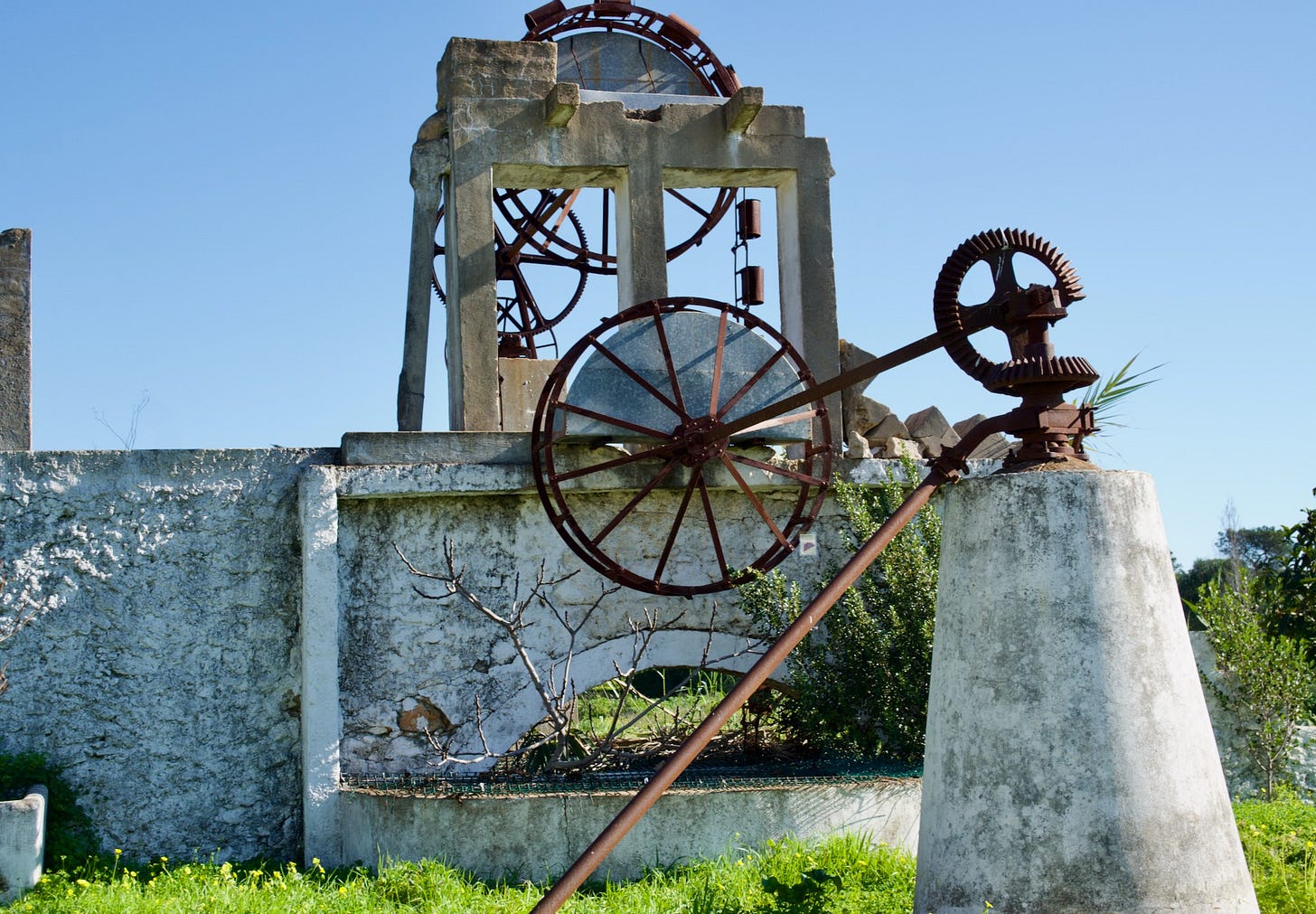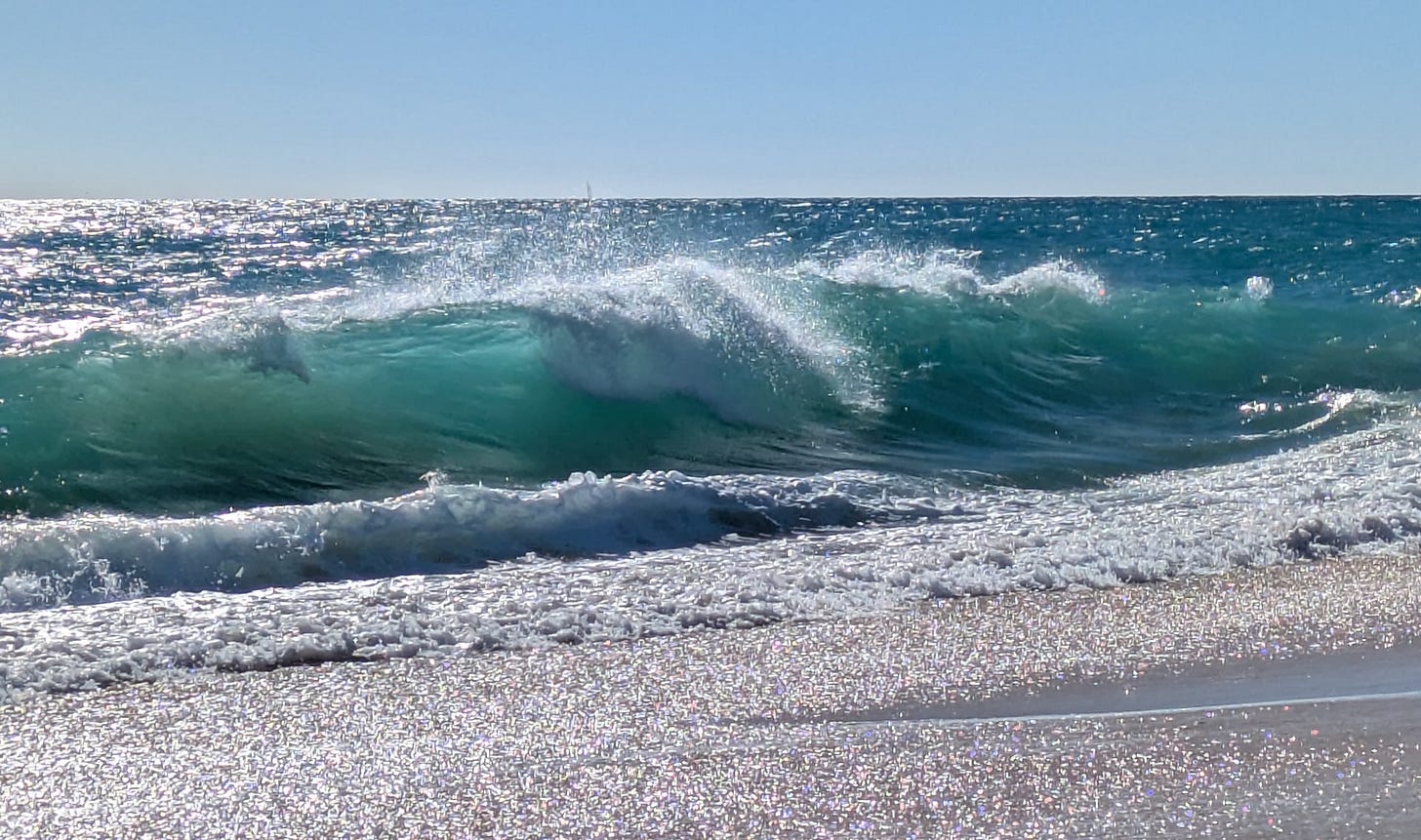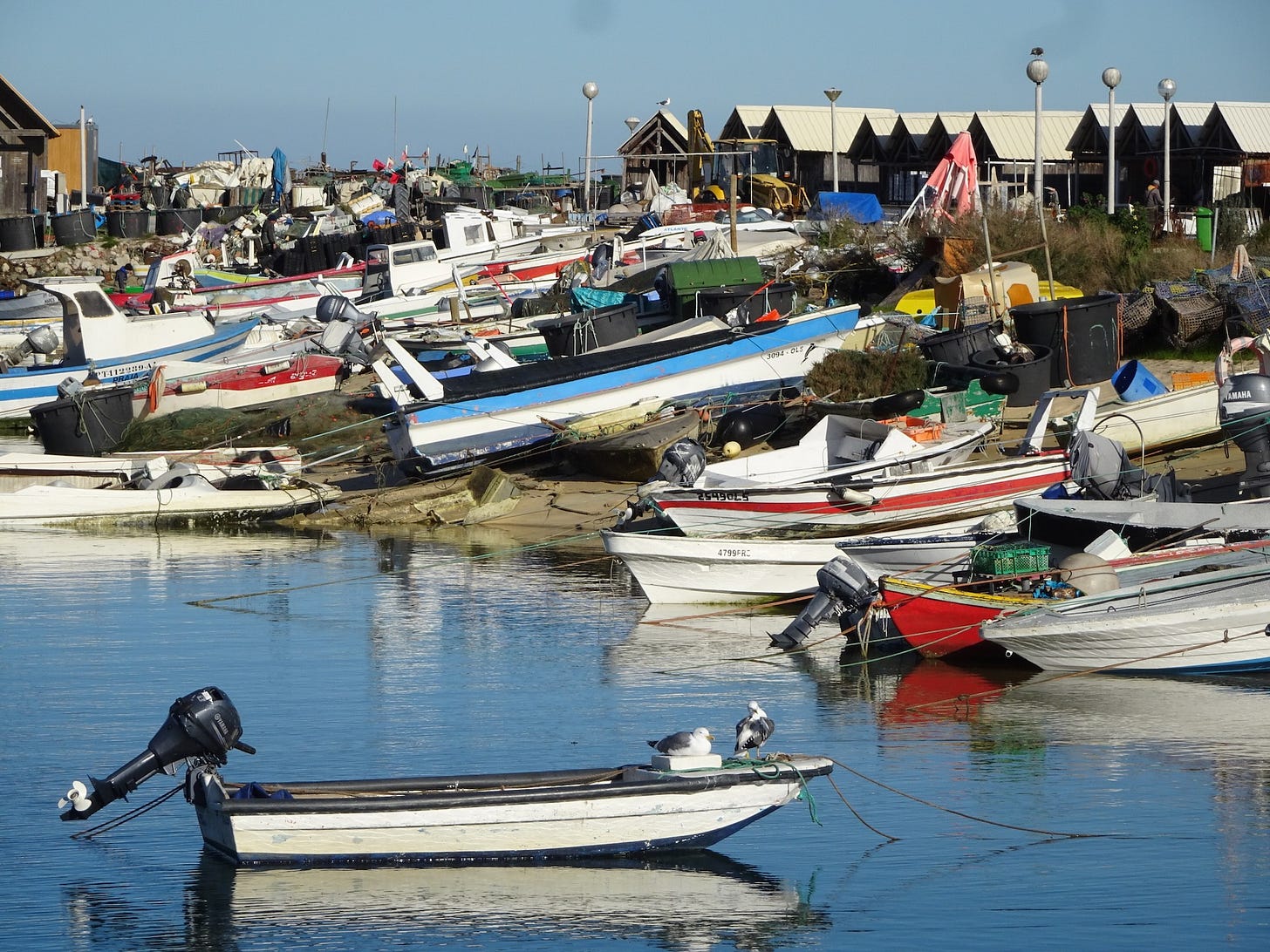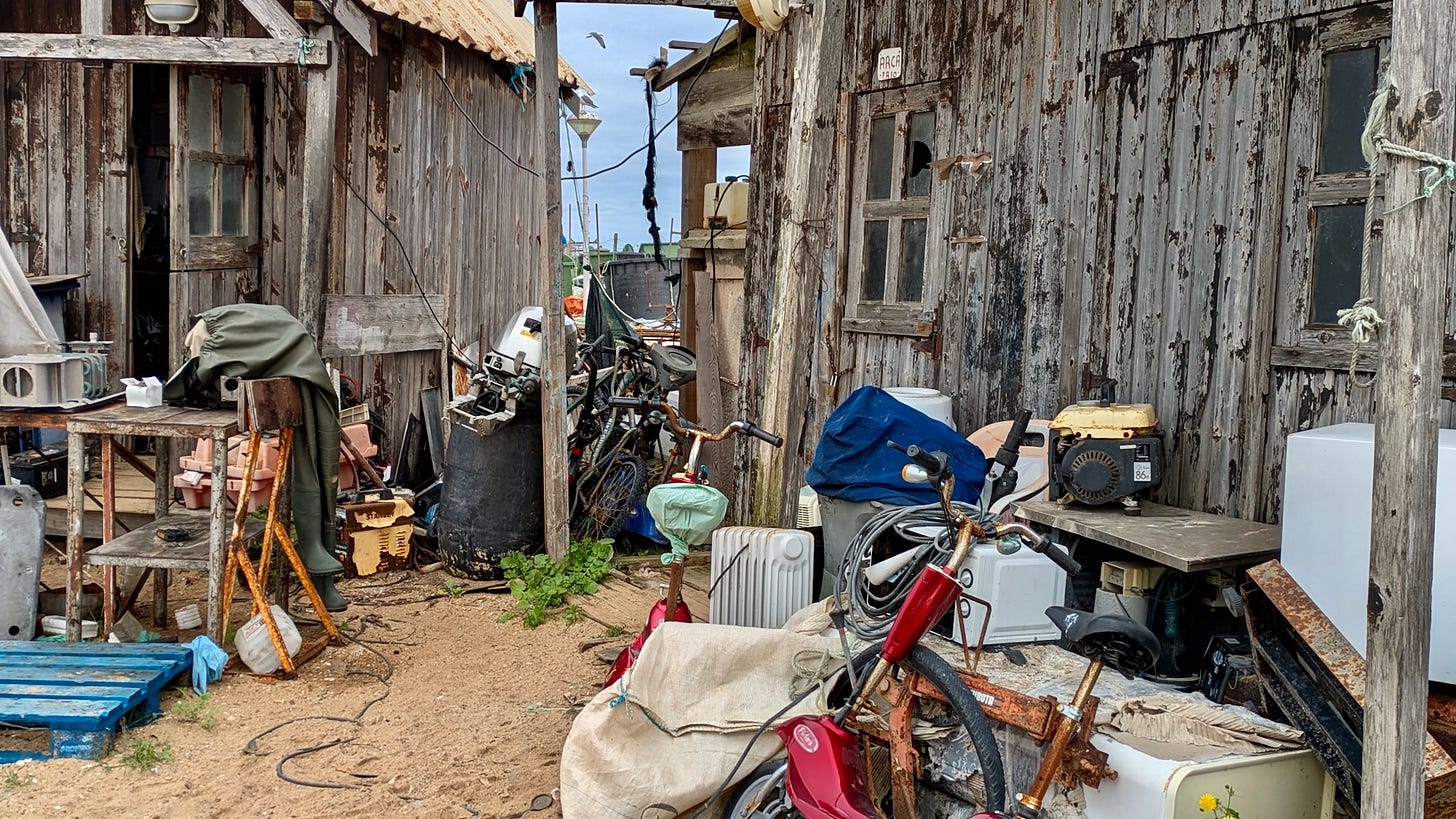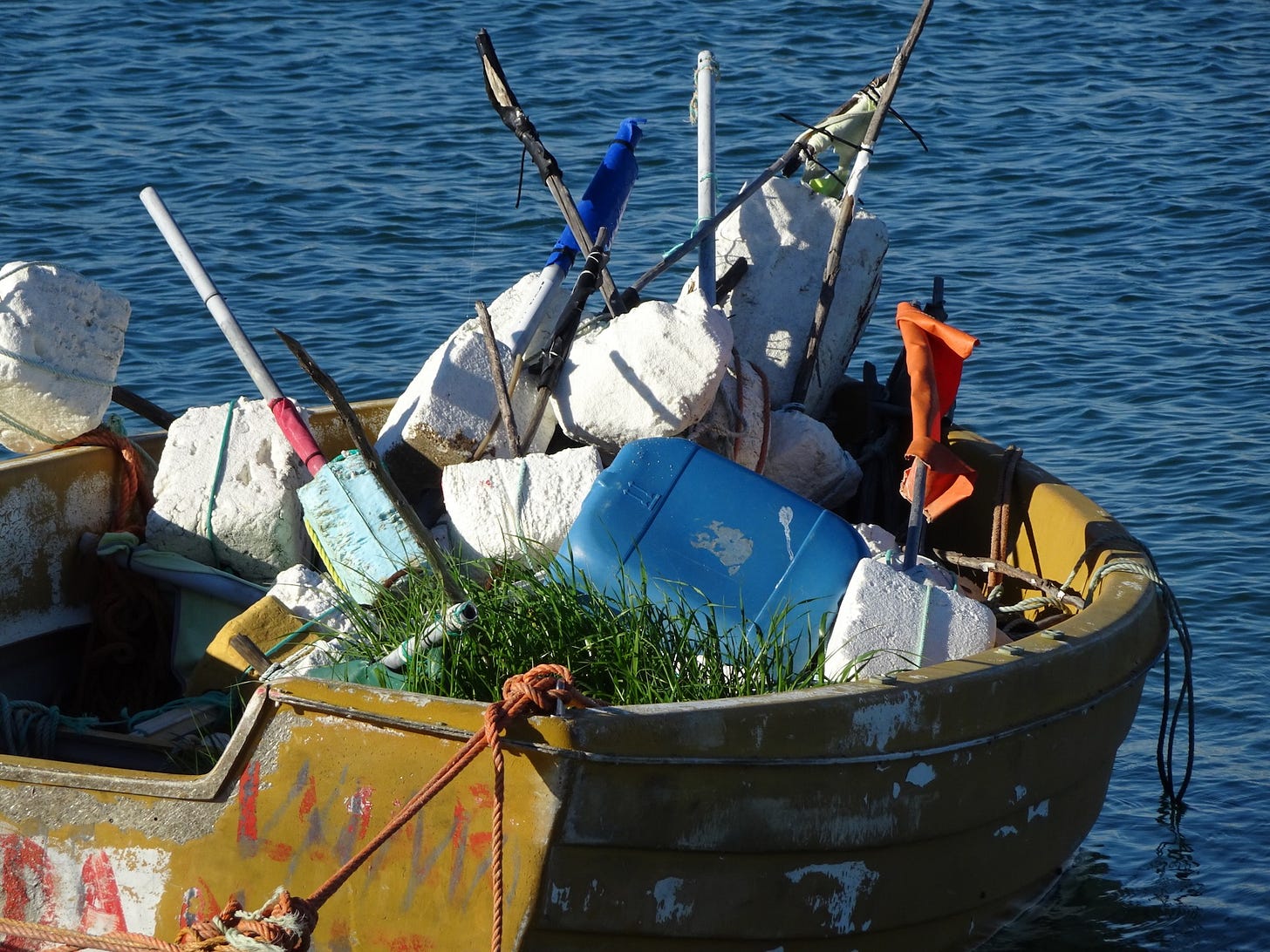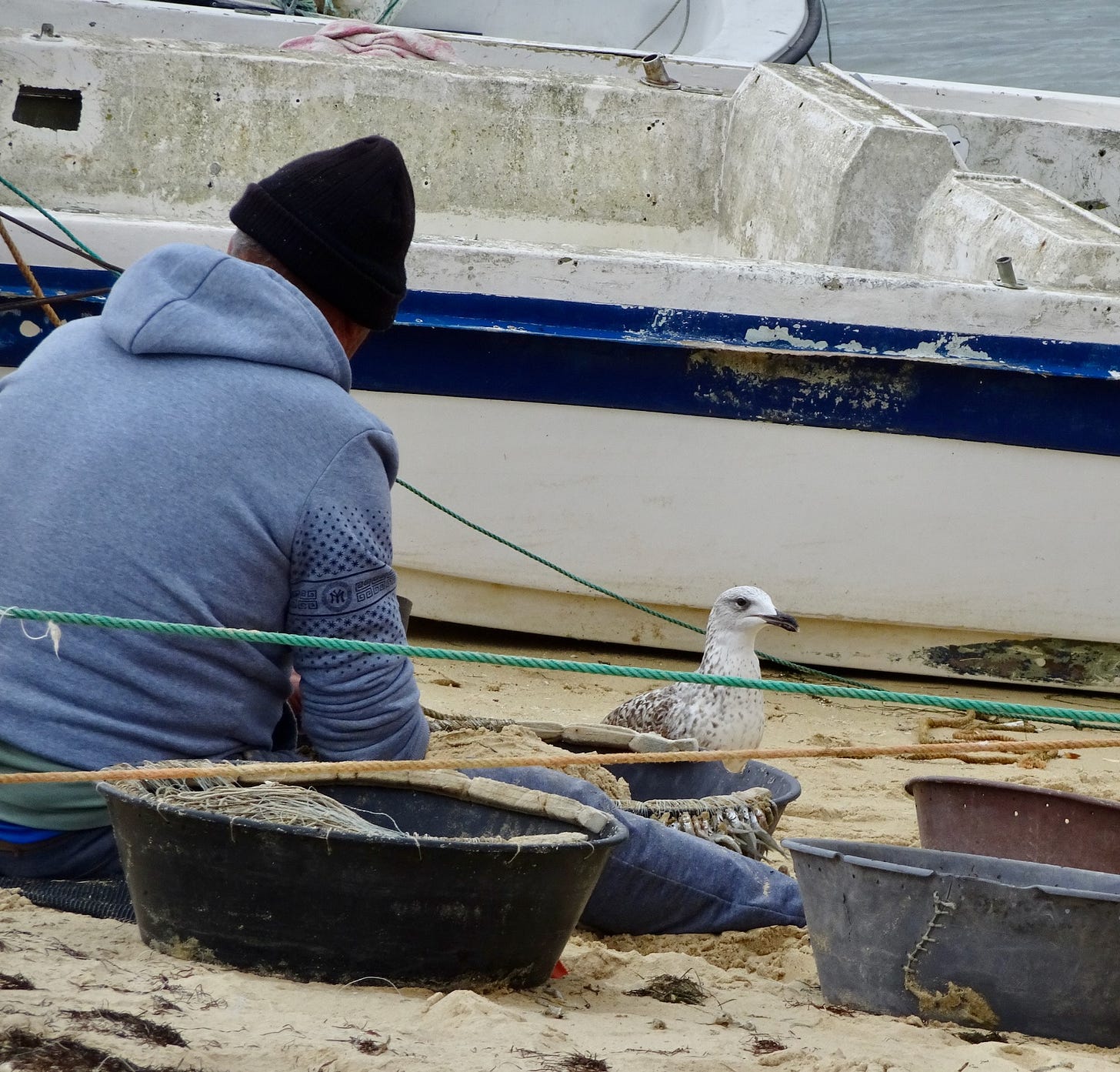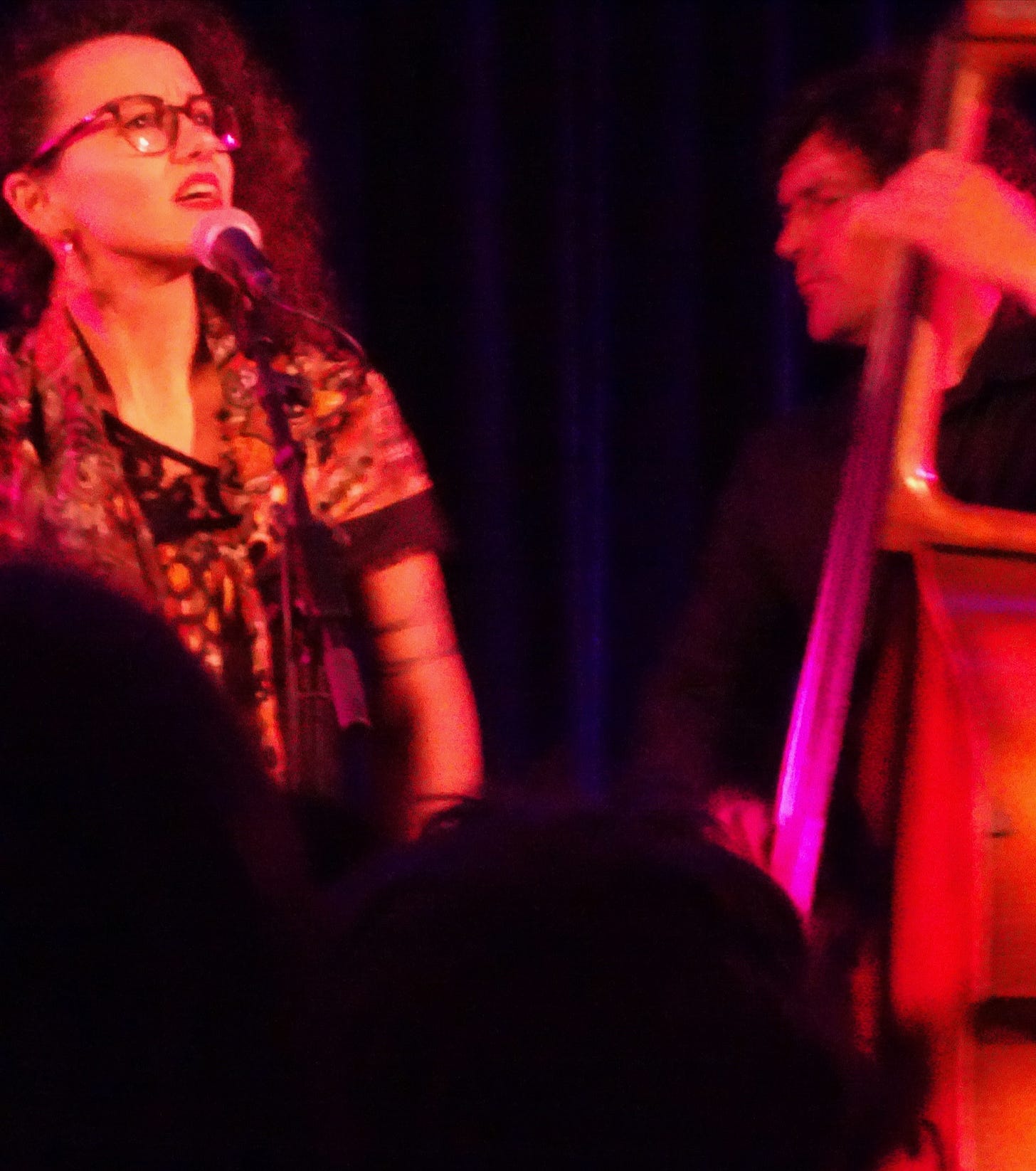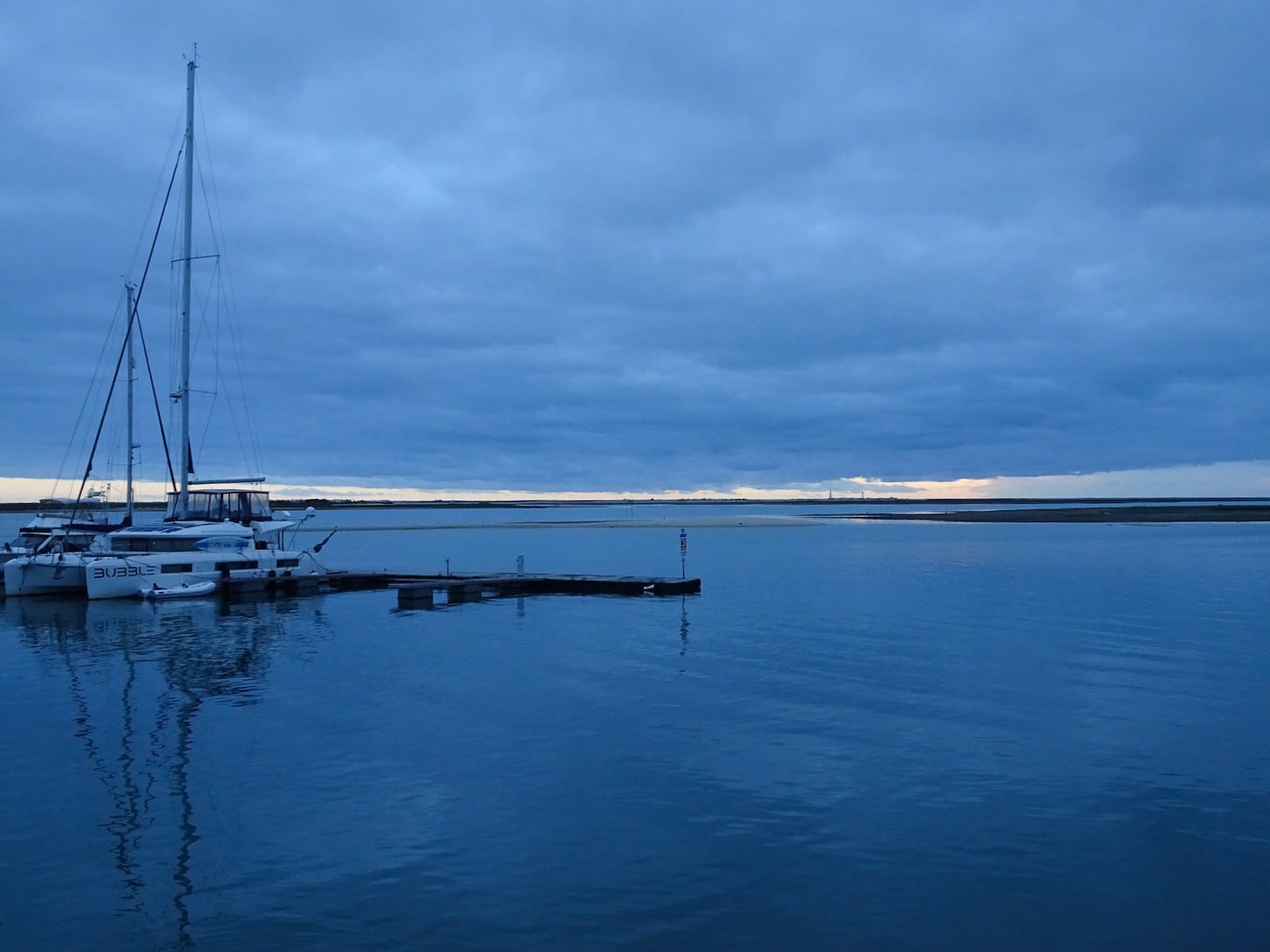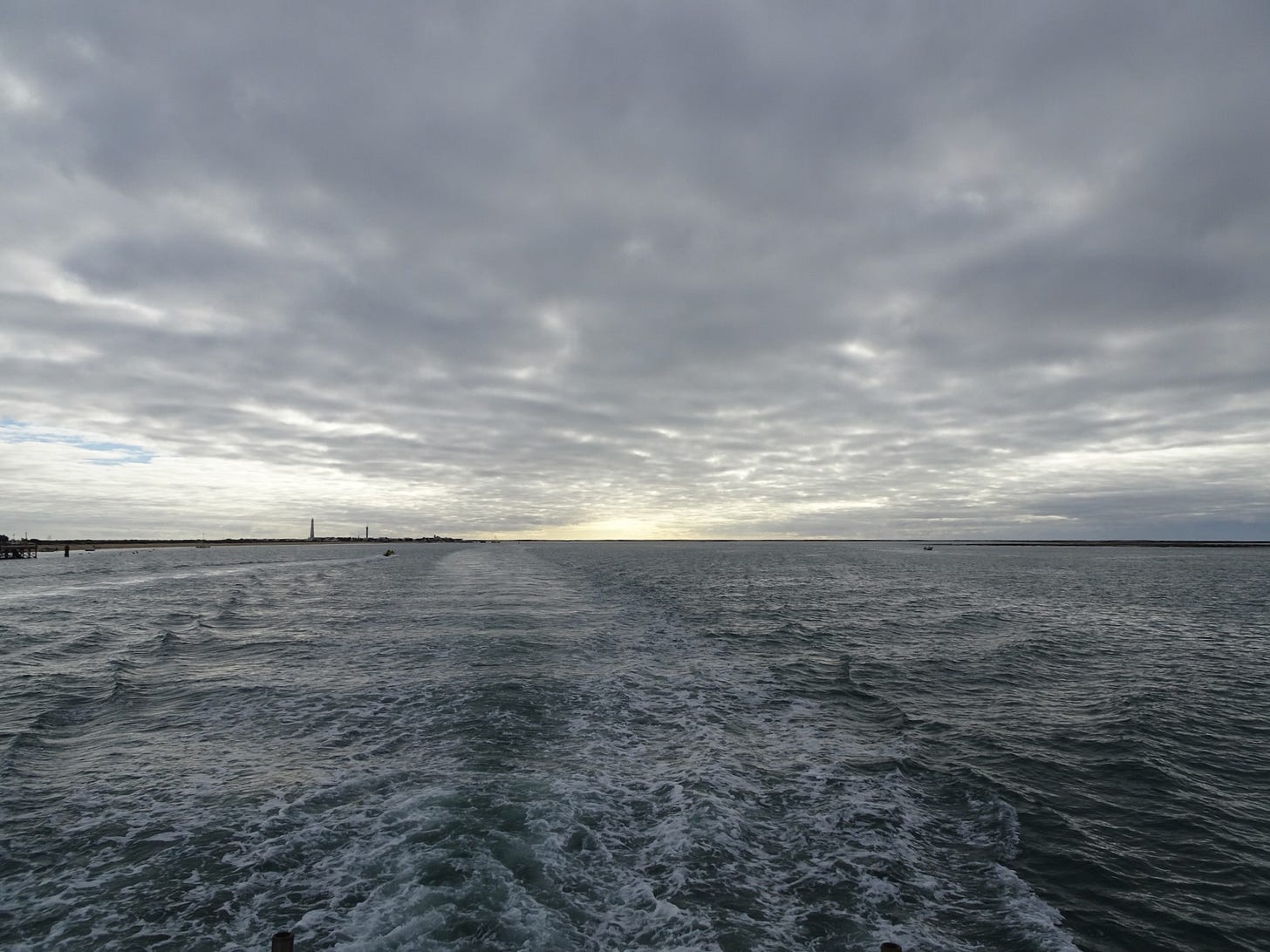Early evening in Olhão in mid-January. Small fishing boats are speeding in across the waters of the lagoon ahead of sunset.
Cormorants dive beneath the surface in the last light of the day.
An egret walks and flutters its way along the water’s edge, also in search of its last meal before night falls. A seagull suddenly divebombs, hoping, perhaps to snatch a fish from either the cormorants or the egret.
It’s cold but calm – the small islands of Culatra and Armona protect this part of the lagoon from Atlantic waves, though in stormy weather the lagoon gets choppy too. There’s a smattering of tourists and locals having a sunset drink, well wrapped up against the winter chill.
And compared to Edinburgh, where I travelled from, sunset is nearly two hours later – longer days, more light, and the peaceful waters of this eastern side of the Algarve, where the Ria Formosa nature park stretches 60 kilometres almost to the Spanish border.
Olhão, out of season, is mostly quiet – partly deceptively so, as it is also home to the largest fishing port on the Algarve. And the twin red brick buildings on the waterfront that house the fruit and vegetable market and the fish market, respectively, do a good trade in winter too – the fish market often at its busiest as boats off-load their catch in the mornings.
On Saturdays, the waterfront is busy as traders come in to set up their stalls between the market buildings and the waterfront. The stalls ply a busy trade as locals, and winter visitors, do their weekly shopping – oranges, big tomatoes, fresh ginger, large bunches of coriander, olives, nuts, deep fried pastries to keep you going, courgettes, aubergines, mangoes and much more. Others are chatting over a coffee in the cafes, that stretch from the brick walls of the market buildings to the edge of the outdoor markets stalls. There’s a noisy, cheerful sense of energy and connection.
Other, quieter days, I often sit for a morning coffee at one of the cafes to the side of the fish market, where the old men especially gather for a morning gossip. It catches the sun, and there’s a view through between the two market buildings to the lagoon. It’s a good point to watch any comings and goings.
One morning, I’m up early to catch the quiet before dawn and then dawn itself. It’s peaceful for a while, but the smallest boats are coming in with their fishing haul stored in big, heavy rubber buckets with handles. I watch two men take one side each as they carry their catch into the fish market. Then one man comes by just managing to haul his own heavy load in on his own.
Along the front, the grey morning light starts to be pierced by rays of red and gold finding their way through the clouds and reflecting back in the water. Cormorants fly overhead, seagulls swoop down to the water, and pigeons chatter noisily over the seed someone has thrown for them on the front. The water is calm, only stirred up a little by the odd small boat coming in or heading out.
It’s a peaceful moment of changing light and mood; the sky and lagoon slowly dividing into their separate spaces as the horizon appears.
Almost every other day, I walk to the end of the waterfront to the salt pans.
Especially at or near high tide, when the sandbanks and mudflats are covered and so no good for birds to dig out clams and other delicacies, then a diverse array of birds come to the edges and small mud surrounds that divide up the salt pans. The birds either wait in large flocks, or wade to search for what they can find in the pans.
There are stilts, redshanks, curlews, avocets, the occasional egret, plovers, dunlin and more.
Overhead, a couple of times, I catch big groups – flamboyances – of flamingos flying over, but they land further west beyond this group of salt pans.
At lower tide, beyond the salt pans where the real mudflats begin, clam fishermen and women can be seen bent over digging out the clams, storing them in big buckets to later take and sell in the market or to tavernas. Some walk onto the mudflats, others take their boats further out in the lagoon to the mudflats exposed as the tide goes out, sometimes with their dogs too.
Just to the eastern side of Olhão lies a smallish nature reserve. It’s very green, pastoral almost. A gentle walk takes you through the trees and scrub, then along the water’s edge with views out to Armona, on past the tidal mill, so evocative of times past (and of our need for more green waterpower today).
And further round, past the old Roman salting tanks, and the Moorish water wheel. Layers of history. A large bird, probably a buzzard, soars above me.
Some other days, I take the ferry out to Culatra island – mostly locals but a few winter visitors on the chunky old ferry that heads out, avoiding the sandbanks and mudflats, to the landing point. From there, it’s a couple of kilometres to the Atlantic side of the island – waves rolling in, sanderlings running in and out at the edge of the water, the endless stretch of sands disappearing into the haze, few people.
But on the lagoon side of the island, the harbour is a jumble of boats, cormorants and seagulls bob around in the water. And just above the harbour, the black wood of the crammed together fishermen’s huts catch the eye. Wander past and there are nets, ropes, old bikes, wooden boxes, discarded tools.
Further round past the huts, the fishermen are sorting their nets having brought their catch in. They thread or weave the nets across a wooden scaffold, untangling them as they pull them through. One fisherman pulls out the few fish still caught in his net and tosses them to the waiting gaggle of loud seagulls.
It may be quieter in winter but there is still some entertainment in Olhão. The weekend brings jazz or folk at the local arts centre. Sunday evenings are the cue for heading for the jazz café on the front.
Soon enough, it’s time to head home from the peaceful fishing village on the lagoon.
I flew out. But I’m heading home to Edinburgh, on no strict timetable or advanced bookings, overland. My first stop, I decide, will be Lisbon – and having been told there may be a train strike the day I’m leaving, I head one morning to the bus station in Faro to catch the express bus north. Altogether, it will be a journey of over 2,000 miles – a story for another blog.





